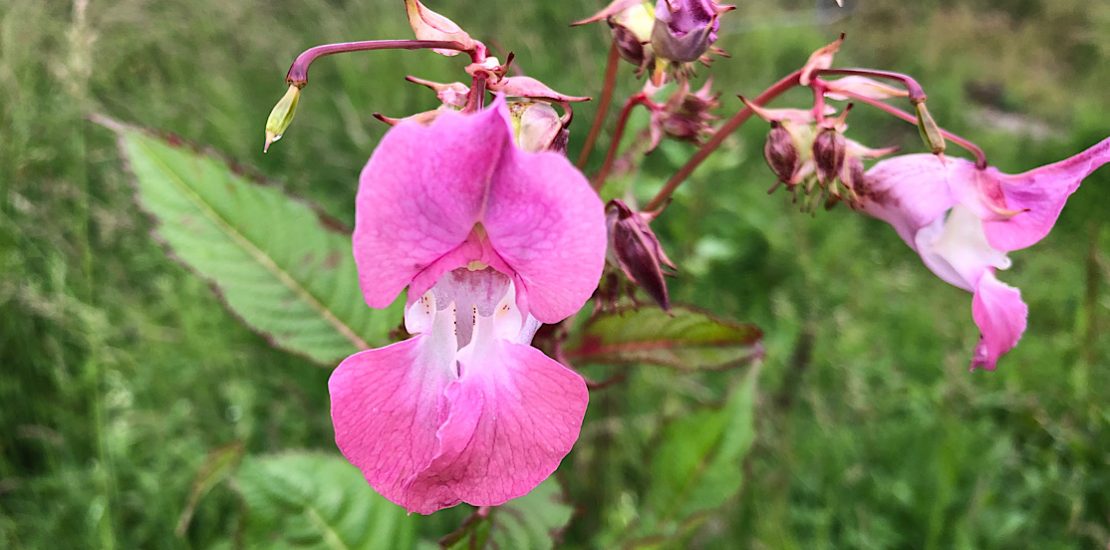Why does Himalayan Balsam need to be controlled?
- June 23, 2022
- Posted by: admin
- Category: Industry News

What is Himalayan Balsam?
Himalayan Balsam (Impatiens Glandulifera) sometimes referred to an Indian balsam was introduced to the UK in 1839. The plant spreads solely through seed dispersal. It is an annual plant, meaning its entire lifespan is 1 year only.
Why is Himalayan Balsam bad?
This plant is a whopper! Himalayan balsam grows rapidly and spreads quickly year on year. So even a small scattering of individual plants can quickly invade an area. The sheer height and spread of each plant rapidly overwhelms existing vegetation and can kill off ground cover. The multiple seed heads develop late summer and explode, throwing thousands of Himalayan balsam seeds many metres from the parent plant.
Is there anything good about Himalayan Balsam?
Himalayan balsam is a pretty plant with pink trumpet shaped flowers and broad jagged green leaves. It’s a relative of the busy lizzie, but like a much beefer, brassier version! Its relatively late flowering so does have good credentials as a late season food source for pollinators such as bees and hoverflies.
Why does Himalayan Balsam need to be controlled?
Himalayan balsam is a notifiable invasive non native species. It is listed on schedule 9 of the Wildlife and Countryside Act (1981) making it an offence to plant or otherwise allow it to spread in the wild. This has consequences for allowing the plant to spread beyond your site boundary.
Himalayan control options:
- Uprooting the plant is the best method of control and is the most environmentally friendly option.
- If there is an abundance of Himalayan Balsam, then cutting it can be considered although this is a time sensitive task and its usefulness for your site is best advised by our practical and friendly team.
- Difficult infestations may require treatment with glyphosate either as a foliar application or by stem injection. Or, if there is room onsite, the Himalayan balsam may be mechanically excavated and buried in onsite treatment pits.
- Our habitat team have clocked up many many hours of Himalayan balsam control and will be able to advise you of the best options for your site.
- As Himalayan balsam seeds are viable for up to 2 years, all treatment and control options will require a repeat programme for 2 to 3 years to eradicate or contain the infestation.
What to do next:
If you’re not sure you’ve got Himalayan Balsam then you can book our experts to conduct a site wide survey. If the plant is identified onsite we can prepare a method statement outlining control options, this is useful when seeking planning permission for the site but the most popular option is for our balsam control experts to start a treatment programme onsite for you asap.